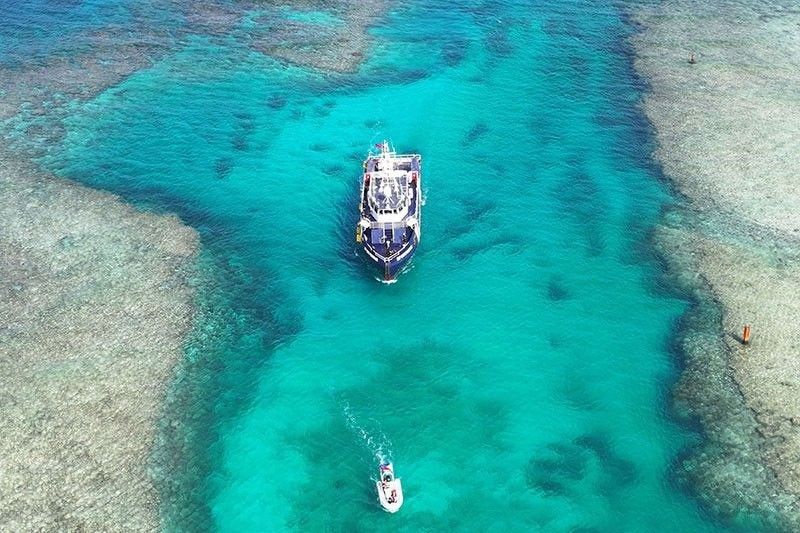West Philippine Sea at risk from natural, human-induced stressors — study

MANILA, Philippines — The West Philippine Sea (WPS) is at risk from both natural and human-induced stressors like climate change, fisheries and plastic pollution, according to a study conducted by the University of the Philippines Marine Science Institute (UP MSI).
The UP MSI has launched the West Philippine Sea State of the Coast report recently, where it said that the WPS is highly exposed to risks from increasing frequency and severity of typhoons, which can cause considerable physical damage, not only to ecosystems, but also to coastal communities.
“The continued rise of sea surface temperatures is causing more frequent and severe mass coral bleaching events, which can exacerbate the effects of other threats such as outbreaks of crown-of-thorn starfish that can cause significant loss of coral cover,” the report said.
It added that satellite detections of light fishing vessels showed an increasing trend until 2018, peaking at 800 vessels in a single night.
“Most vessels moved from outside the Philippine exclusive economic zone (EEZ) into the country, indicating that they were likely foreign-flagged. From 2015 to 2019, vessels moved closer to shore in the WPS, especially near northern Luzon and Palawan. Since 2021, they have concentrated around the Kalayaan Island Group and the northwestern EEZ borders,” the report stated.
It noted that a survey of 67 barangays in the WPS region found an estimated 47,600 fishers, but only about 33,200 were registered.
“There was a perceived decline in fish catch due to increasing fisher population, habitat degradation, destructive fishing practices and foreign poaching and encroachment, particularly by Chinese vessels, which restricted access to several fishing grounds,” the report said.
Meanwhile, the UP MSI reported that in 2023, the Philippines generated an estimated 14,600 metric tons of plastic waste daily, which was about 24 percent of the total waste generated.
“A significant portion of this plastic waste ends up in the sea. Four rivers draining into Manila Bay contribute to 10 percent of the global riverine plastic pollution,” the UP MSI said.
Research expeditions in the Kalayaan Island Group found plastic litter, mainly from Vietnam, Malaysia, Indonesia and China, dominating the trash on Parola and Pag-asa Islands, according to the report. — Mark Ernest Villeza
- Latest
- Trending





























